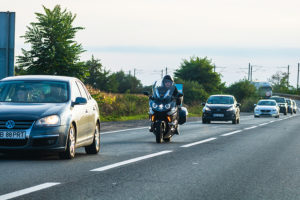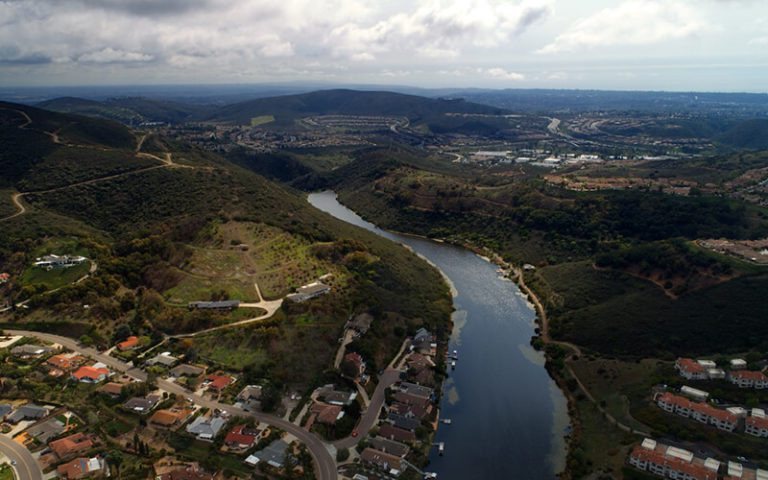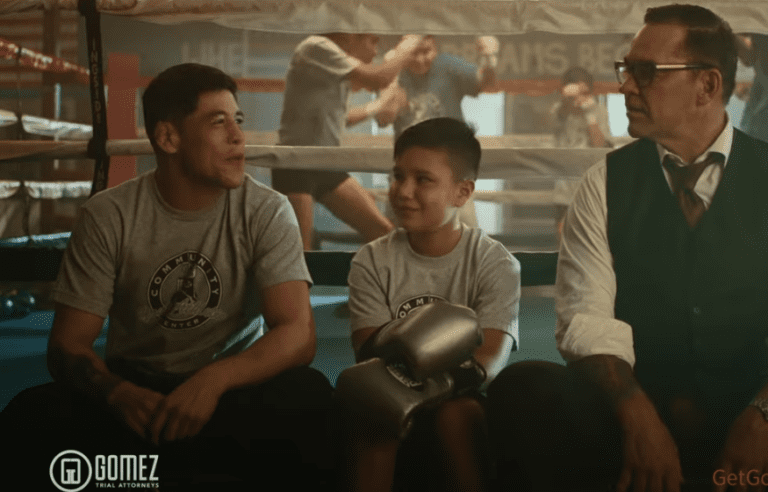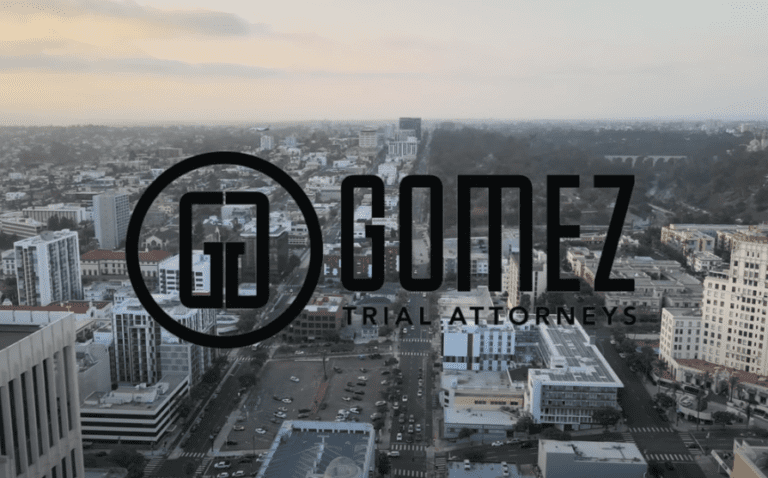 When you ride your motorcycle in San Diego, accidents occur when you least expect them. Distracted, impaired, and speeding motorists can make even a short trip dangerous. Even when you drive with care, a single impact collision can be destructive enough to send you to the emergency room.
When you ride your motorcycle in San Diego, accidents occur when you least expect them. Distracted, impaired, and speeding motorists can make even a short trip dangerous. Even when you drive with care, a single impact collision can be destructive enough to send you to the emergency room.
Motorcycle accidents don’t always cause severe injuries, but bikers often require post-accident emergency care. While some require only minimal treatment, others suffer fatal injuries or endure injuries with lifelong consequences.
Even at low speeds, a vehicle’s impact can easily send you and your bike to the pavement. Road rash constitutes the minor end of the motorcycle injury spectrum, but even road rash has the potential for complicated, severe outcomes. You can also endure lower body trauma when your motorcycle pins you down.
If an impact is powerful enough, it may eject you against a wall, a light pole, or another stationary object. When a larger vehicle or large truck initiates a crash, survivability may become a genuine issue.
Motorcycle Accidents in San Diego
The California Department of Motor Vehicles’ most recent registration data lists 85,488 registered motorcycles in San Diego County. That total ranks second behind Los Angeles County. San Diego County’s 2,923,189 cars, trucks, tractors, and trailers clearly outnumber its registered motorcycles. The numbers magnify the issues that occur when motorists fail to share the road or simply don’t see the motorcycles in nearby traffic.
Recent motorcycle accidents demonstrate a biker’s clear disadvantage on the road. The Berkeley Transportation Injury Mapping System documents recent motorcycle accidents and injuries.
Bikers and/or their passengers sustained injuries in every reported motorcycle accident.
- Total motorcycle accidents in San Diego County: 1,109
- Fatalities: 43
- Total injuries: 1,199
- Severe injuries: 222 (20.02 percent)
- Visible injuries: 539 (48.60 percent)
- Complaints of pain: 305 (27.50 percent)
How Motorcycle Accidents Occur
When you ride a motorcycle, your safety often depends on the awareness of other motor vehicle operators on the road. Some drivers don’t or won’t recognize that bikers have the same rights as drivers. They can’t always determine a biker’s speed, yet will proceed anyway. Drivers often cut off a biker’s right of way when changing lanes or making turns.
When the National Highway Traffic Safety Administration (NHTSA) researches motorcycle accidents, it consistently documents the same patterns and similar statistics. Each year, the Department of Transportation encourages motorists to “Share the Road.” Despite annual motorcycle public safety campaigns, motorcycle accident statistics fluctuate only minimally. The NHTSA has yet to modify its annual conclusion that bikers appear overrepresented in traffic fatalities.
In fact:
- Motorcycles make up three percent of all vehicles registered nationally and one percent of the mileage, yet bikers and their passengers make up 14 percent of all motor vehicle fatalities.
- A motorcyclist faces a risk of sustaining fatal injuries in a crash 29 times higher than a person in a car or truck. The NHTSA bases this figure on vehicle miles traveled.
- A motorcyclist faces four times the risk of sustaining injuries in a crash than what a vehicle occupant faces.
- Drivers in trucks and cars have issues sharing the road with motorcycles. One momentary lapse in attention can result in a motorist causing a fatal motorcycle crash.
Motorcycle Accidents Factors
Patterns of Occurrence. The National Transportation Safety Board (NTSB) report, Select Risk Factors Associated with Causes of Motorcycle Crashes, documented common patterns in accidents that the NTSB reviewed:
- Days of the week: Over 51 percent of the motorcycle crashes and 50 percent of the fatal crashes occurred on Friday, Saturday, and Sunday.
- Location: 65 percent of the crashes occurred in urban areas, with 79 percent on high-capacity urban arterial roadways.
- Time of day: Motorcycle crashes occurred most frequently from 2:00 pm to 8:00 pm and least frequently from 12:00 am to 6:00 am.
- Daylight/Dark: Approximately 27 percent of motorcycle crashes occurred at night, and 66 percent happened during daylight hours.
Contributing Factors. The NTSB investigates accidents across all modes of transportation. Human, vehicle, and environmental factors all combine to cause crashes.
Certain patterns of driver action precede all motorcycle accidents:
- The majority of the crashes the NTSB reviewed involved a motorcycle and a second vehicle.
- The second vehicle often reported not seeing the motorcycle or being unaware of a dangerous situation.
- When a motorist didn’t see and respond to a motorcycle, the motorcycle didn’t have enough time to recognize and respond to the danger.
- Even when a vehicle had crash warning technology, it often failed to acknowledge and respond to the motorcycle.
- When a biker applied the brakes to avoid an accident, the biker often lost control due to the bike’s inherent instability.
A vehicle/motorcycle crash usually involves many causes. Once a vehicle fails to see or acknowledge a motorcycle in an oncoming or adjacent lane, several scenarios might unfold. Most occur due to a motorist’s visibility issues or a motorcyclist’s avoidance efforts.
These descriptions explain the most common motorcycle/vehicle accident scenarios.
- Inappropriate left turn: The motorist makes a left turn in the motorcycle’s path.
- Attempted avoidance: The motorcyclist falls onto the roadway, attempting to avoid a crash.
- Sideswipe: These types of accidents occur when a motorist attempts a lane change without checking his or her blind spot.
- Infrequent scenarios: A motor vehicle makes a U-turn or a Y-turn in the motorcycle’s path; a vehicle crashes into a motorcycle’s rear; a vehicle turns right into the motorcycle’s path; a motorcycle and vehicle collide in a T-bone formation at an intersection.
The NHTSA’s Traffic Safety Facts Tables show national crash statistics from several points of view. Below, we include the list of casualties based on the accidents involving a motorcycle and at least one vehicle.
The list shows the type of harmful event in the accident and the resultant injuries.
- Total Casualties: fatalities, 2,811; injuries, 44,000
- Front impact: fatalities, 2,089; injuries, 27,000
- Left-side impact: fatalities, 174; injuries, 6,000
- Right-side impact: fatalities, 133; injuries, 5,000
- Rear impact: fatalities 224; injuries 6,000
- Unknown/other impact: fatalities, 191
How Severe Motorcycle Accident Injuries Occur
In California, motorcyclists must comply with the state’s helmet law. Based on Centers for Disease Control and Prevention (CDC) research, when a helmet meets Federal Motor Vehicle Safety Standards, the helmet provides effective head and brain protection when an accident occurs. Helmets serve as one of the few defenses that bikers have during an accident.
As bikers have only minimal injury protection, the following factors increase the certainty that a biker will sustain injuries during a crash.
A Motorcycle’s Lower Weight
Many private passenger vehicles weigh less than they did even a few years ago. Some motorists choose weightier SUVs for better crash protection. These vehicles range in weight from 2,000 to 6,000 pounds. As a motorcycle weighs an average of 700 pounds, any one of these larger vehicles has the power to damage a motorcycle and cause significant injuries to the biker during a crash.
Biker Balance Issues
A motorcycle’s two wheels render it less stable than a car or truck. It immediately loses its balance with the force of even a minor impact. When a collision involves a larger or faster vehicle, the force will prove more powerful. The heightened impact often ejects the rider, tossing him across the pavement or into a stationary object.
Lack of Protection
A motorcycle’s open-air freedom serves as one of its major attractions. This freedom is also part of what makes riding a motorcycle so dangerous during a crash. A motorcycle’s design doesn’t incorporate traditional safety systems. Bikers might wear helmets, boots, leather accessories, and Kevlar gear. However, these items provide only limited protection when a crash ejects a biker onto the pavement.
By comparison, motor vehicle occupants ride in steel-reinforced passenger compartments. Cars have seat belts, shoulder harnesses, airbags, airbag curtains, and child safety seats for further protection. Even without these complex safety systems, a motorcycle impact doesn’t have enough force to harm vehicle occupants. While an ambulance usually transports a biker for emergency care, car and truck passengers often leave an accident scene injury-free.
Biker Visibility
When national safety agencies analyze vehicle/motorcycle crashes, visibility may become a factor. Sometimes, vehicle drivers struggle to see motorcyclists in oncoming or adjacent lanes. When drivers don’t notice the potential for an accident, they maneuver their vehicles more dangerously.
Motorists Can’t Judge a Motorcycle’s Speed
The annual U.S. Department of Transportation “Motorcycle Awareness” campaign addresses several key safety concerns. The campaigns often focus on motorists’ obligation to share the road with bikers. Because of a motorcycle’s size, motorists often misjudge the bikes’ speed and distance from them. Bikers don’t always come to a full stop, but some motorists anticipate their movement based on brake light illumination. To minimize the risks, the DOT recommends that vehicle drivers allow motorcycles to complete their actions before judging their next move.
More About Biker Visibility
The National Highway Traffic Safety Administration (NHTSA) determined that 41 percent of vehicle/motorcycle accidents occurred because the vehicle driver didn’t notice the biker. Each year, the agency encourages drivers to Get Up to Speed on Motorcycles.
The module “Hard to See,” addresses several of the following issues related to vehicle drivers’ ability to see motorcycles in traffic.
- Narrow Profile: A motorcycle’s size makes it less visible to other vehicles.
- Blind Spots: The size also allows a motorcycle to get lost in a driver’s blind spot.
- Environmental Conditions: Weather and light conditions affect a motorcycle’s visibility.
- View Obstructions: Drivers don’t always see motorcycles when landscaping materials, construction equipment, and other items obstruct their view.
- Traffic: A motorcycle’s size also reduces its visibility when it is surrounded by cars and trucks in adjacent lanes.
Looked, but Failed To See
When a driver can’t see a motorcycle in plain sight, the Human Factors and Ergonomics Society calls the condition “inattentional blindness.” In studying drivers’ post-accident statements, researchers further identified the condition as “looked but failed to see.” This frequently happens before a car or truck crashes into a motorcycle.
In a Science Daily article, “Why drivers may fail to see motorcycles in plain sight,” researchers explained that the phenomenon exists because the human brain has a limited capacity to detect surrounding objects. To help resolve this natural limitation, the NTSB recommends that vehicle manufacturers design driver-assist technologies that can better detect motorcycles. Due to a motorcycle’s size, current driver-assist systems may fail to recognize bikes in traffic.
Serious Motorcycle Accident Injuries
When a car crashes into a motorcycle, size and weight differences contribute to severe, fatal, and catastrophic injuries to the biker. Bikers often sustain multiple lower limb injuries when a motorcycle overturns and pins the rider to the pavement. Upper body and head trauma injuries occur less frequently. When they do, they often cause catastrophic or fatal injuries and long-term or permanent impairments.
Bikers commonly sustain these and other injuries during an accident with a car or truck:
- Traumatic brain damage
- Spinal damage, often with paralysis
- Spinal disc injuries
- Traumatic amputations
- Road rash
- Pavement burns
- Degloving injuries (trauma removes the skin from a limb or digit)
- Internal organ damage
- Blindness
- Multiple fractures
- Fatal injuries
Some motorcyclists quickly recover from their injuries. Others endure permanent impairments that affect the rest of their lives. When a crash ejects a biker onto the concrete and causes a severe brain or spine injury, the biker has little chance for a full recovery. Whether a biker sustains moderate or catastrophic injuries, the responsible party should pay for those injuries.
Do You Need an Attorney to Handle Your Motorcycle Accident Injury Claim?
When you are seriously injured in a motorcycle accident, you need a motorcycle accident attorney working on your behalf. Insurance companies, their attorneys, and their claim investigators want to monopolize your time and gain your cooperation. They often attempt to settle your claim before you find out its true value. You need a motorcycle accident attorney who will protect your rights and allow you to focus on healing.
Your initial consultation is almost always free and you don’t have to commit to taking any action. You simply tell the attorney about your accident and find out more about your recovery options.







